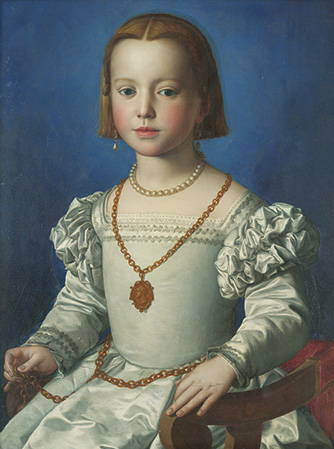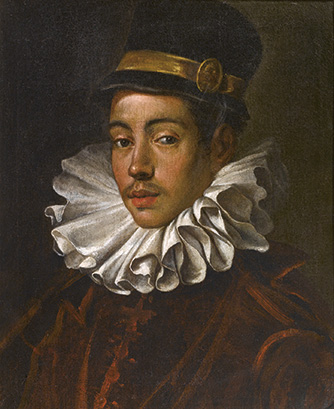Sol Levante nel Rinascimento Italiano(A Monumental Journey to the Far Side of the World: The Art of Renaissance Italy and the Boys of Tensho-Era Japan)
On February 20, 1582, the first official emissaries from Japan led by Ito Mancio left for Europe. Still in their early teens, these four boys were dispatched by their feudal warlords at the urging of Italian Jesuit missionary Alessandro Valignano(1539-1606), who believed they should serve as raconteurs to share their experience of a dramatically different world with compatriots upon their return.
After traveling through Florence, Bagnaia, Caprarola and other thriving communities of the Italian Renaissance, the Japanese delegation finally reached Rome in March 1585. There, they were granted an audience with Pope Gregory XIII, accomplishing a central objective of their mission. They toured even more towns and cities on their trip back to Japan ― visiting, among others, Pesaro, Imola, Ferrara, Venice, Padua, Vicenza, Verona, Mantua and Milan ― and were welcomed by residents, taking part in numerous local events and broadening their worldview along the way.
This exhibition follows the “Tensho-era boys” through their historic journey while also introducing the master works of Italian art and crafts from the various cities they visited. Included among these are: from Florence, the heartland of the Renaissance, paintings of Florentians and craftworks by studio artists of the House of Medici; from Bagnaia, where the Japanese youths were invited to a hunting party, a tapestry depicting scenes from a hunt; from Rome, a portrait of Gregory XII and a commemorative medal of their papal visit; from Pesaro, exquisite earthenware decorated with local myths and tales; and from Venice, examples of the world’s finest glassware and richly-hued paintings of the Venetian school. They are but a small sample of the various art pieces that were unique to and flowered in their localities of that era.
Two of the main highlights of A Monumental Journey are “Portrait of Bia de’Medici” by Bronzino, a court painter of the Medicis, and “Portrait of Ito Mancio” by Venetian artist Domenico Tintoretto, which was discovered in Milan in 2014.
After spending more than eight years abroad, the envoys finally returned to Japan. They would find circumstances markedly different, largely as a result of shogun Toyotomi Hideyoshi’s edict banishing Christian missionaries ― and the fate that awaited the young men would be cruel.
Nevertheless, the accomplishments of the Tensho-era boys, who braved both oceans and perils for the sake of a better understanding of the world beyond their own, warrant the highest recognition. Not only for the role they played in the history of Christianity in Japan, but also for the lessons they provide us in this age of globalization, demonstrating the courage, commitment and willingness to learn needed to further exchanges among disparate cultures.
We hope this exhibition serves as an opportunity for viewers to relive the saga of the boys while enjoying the majestic works of Italian Renaissance art, just as the young emissaries had more than four centuries earlier.
Details
Period
July 28 – September 10, 2017
Cloesd on
August 14 and August28
Opening hour
9AM – 6PM
Admission
Adult 1,500(1,300)JPY / Student 1,000(800)JPY
Children under15 free
Organized by
Executive Committee for Sol Levante nel Rinascimento Italiano (Aomori Museum of Art, The To-o Nippo Press Co.,Ltd., Aomori Broadcasting Corporation, Aomori Prefecture Tourism
Federation)
In Special Cooperation with
Ministero dei beni e delle attività culturali e del turismo – Direzione Generale Musei
Gallerie degli Uffizi
Under the auspices of Ministry of Foreign Affairs of Japan
Ministero dei beni e delle attività culturali e del turismo
Ambasciata d’Italia
Istituto italiano di cultura di Tokyo
Sponsored by
Alitalia-Società Aerea Italiana S.p.A. / ARTERÌA / Yamato Logistics Co., Ltd.
Filming In Cooperation with
NHK Educational Corporation
Planned by
Tokyo Fuji Art Museum
Exhibition Structure

di Cosimo Tori, called Bronzino
Portrait of Bia de’ Medici
c. 1542, Oil on panel
Florence, Gallerie degli Uffizi, Galleria delle Statue e delle Pitture
Antonio Quattrone, Firenze

Robusti, called Domenico Tintoretto
Portrait of Ito - Mancio
1585, Oil on canvas
Milan, Fondazione Trivulzio

